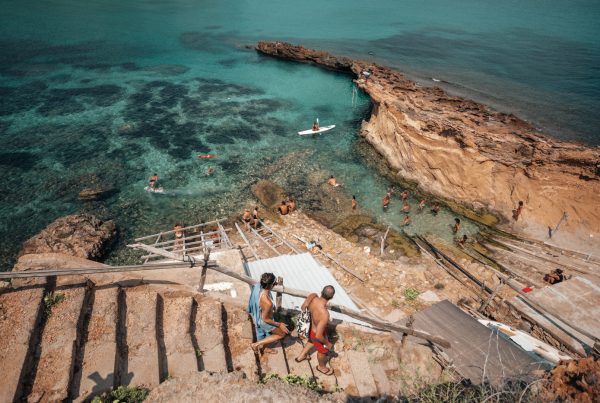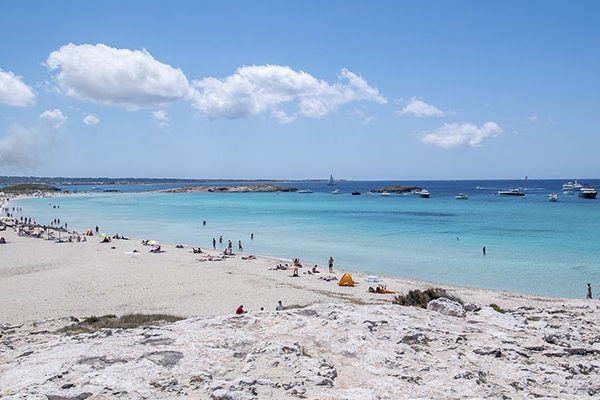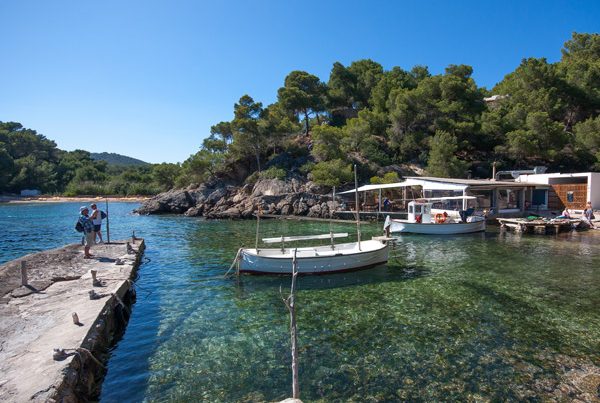As you know, we like to use our blog to offer readers information on the most popular aspects of traditional Ibiza. In keeping with this aim, today we are going to bring you a topic which strikes us as very interesting: the customary dress worn in days gone bymen and women in Ibiza. We hope you like it.
Let’s start with female apparel. First of all, we have what was called Vestido Blanco (the white dress), that is, the traditional bridal gown. It consisted of several petticoats and a close-fitting upper garment covered by an apron, followed by a shawl and, finally, a head scarf.
The clothing was overlaid with a gold chest ornament consisting of six or seven fine chains attached at the shoulders and two or three heavier chains falling slightly lower, all intersected by a vertically hanging gold cross. This elaborate regalia constituted the bride’s dowry. Her sleeves were sewn with gold buttons and gold filigree earrings framed her face. Finally, the bride’s hands were graced by no less than twenty-four gold rings, provided by the groom.
The second costume, called La Gonella, is the oldest dress known in Ibicenco attire and dates back to the 18th century. It consisted of a petticoat and a close-fitting upper garment woven of black wool, with sateen sleeves embroidered either with silver or colorful ribbons. Over this, a gold-embroidered apron was worn, followed by a shawl and a lace head scarf tied under the ponytail, all topped off by a wide-brimmed black felt hat. The number of ribbons that fluttered from the hat indicated the number of suitors the young lady had.
In third place, we have the everyday work dress. (So far we have only seen dresses for special occasions.) The work dress consisted of a petticoat and an upper garment made of lower-quality fabric than the gala dresses. The apron that was worn on top was longer and more appropriate for doing the chores of house and field. On the head, a scarf was worn under a wide-brimmed straw hat. Jewelry was limited to filigree earrings, although these could be matched to the outfit. On her feet the country maiden wore a type of sandals woven from sparta grass, similar to espedrilles (“espardeñas” in local parlance). The work dress was worn almost all the time, except on special occasions when women trotted out their finery.
In regard to the men, we will be brief, inasmuch as the main attraction at gala events was always the women – and so it should be! For wedding attire, we also have the white suit in which the groom donned white trousers, a hand-embroidered white shirt, a neck scarf, a red cumberbund and a black or red waistcoat with little silver bells sewn on. On his feet he wore sandals made of sparta grass and on his head a red cap.
There was also a set of male apparel known as “La Gonella” and, again, this was the oldest-known form of island dress. It consisted of black woolen trousers; a hand embroidered, high-necked white shirt; a waistcoat with its silver bells; a black jacket also with siver buttons; a cumberbund; a neck scarf and the inevitable sparta grass sandals.




